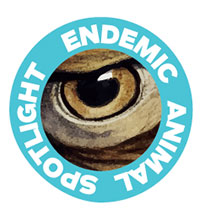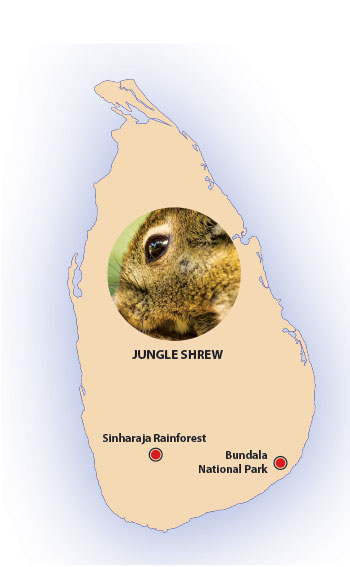Lurking deep within our forests, is a tiny, fast-moving creature that scurries under the leaves, it’s the Sri Lankan jungle shrew. It’s not a mouse, not a rat, and definitely not a squirrel although it may look like one. Our little jungle shrew—is one of the smallest and busiest animals living in the jungle.
What is a jungle shrew?
The jungle shrew is a mammal known by its scientific name Suncus zeylanicus, is a tiny mammal that looks a bit like a mouse but isn’t one at all. It has a long, pointed nose, tiny round ears, soft fur, and sharp little teeth. Its body is usually dark brown or grey, helping it blend into the forest floor.
A super sniffer with a big appetite
Shrews may be small, but they eat a lot. In fact, they eat almost all the time. Jungle shrews love insects, worms, spiders, and other tiny bugs for their dinner. Their sharp sense of smell and strong teeth help them sniff out and munch on their favourite snacks.
Because they move so quickly and eat so often, their heart beats really fast—up to 800 times per minute. That’s much faster than a human heartbeat.
Life in the jungle
Jungle shrews live in moist forests, where there are lots of fallen leaves, logs, and plants to hide in. They are mostly nocturnal, which means they come out to hunt and explore at night. During the day, they hide in burrows or under leaves to stay safe from predators.
Even though they are shy and hard to see, jungle shrews play a big role in keeping the forest healthy by controlling its insect numbers. The little jungle shrew lives in sub-tropical and tropical dry forests in Sri Lanka like Sinharaja Rainforest and Bundala National Park.
A shrew in trouble
Sadly, the jungle shrew is in danger. Because forests in Sri Lanka are being cut down or disturbed by humans, the shrew is losing its home. It is now considered endangered, which means it could disappear forever if we don’t help to protect it.
Luckily, wildlife groups and forest rangers are working hard to keep the jungle shrew’s home safe by protecting natural habitats and raising awareness.
How can you help?
You may be small too—but just like the jungle shrew, you can make a big difference. Here’s how:
- Learn about wildlife and tell your friends what you know
- Visit nature parks and respect animals’ homes
- Never litter in forests or parks
- Support tree planting and forest protection programs
Even drawing pictures or writing stories about animals like the jungle shrew will educate others about the danger this tiny creature is facing and inspire others to care about its fate too.
So next time you’re walking near a forest or reading a nature book, remember our tiny jungle shrew—Sri Lanka’s secret jungle explorer. The jungle shrew may be little, but it’s a giant when it comes to keeping our forests healthy.









